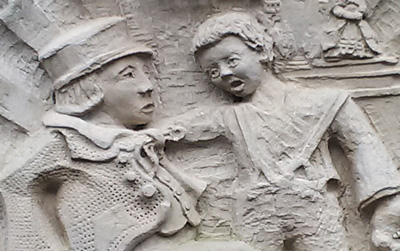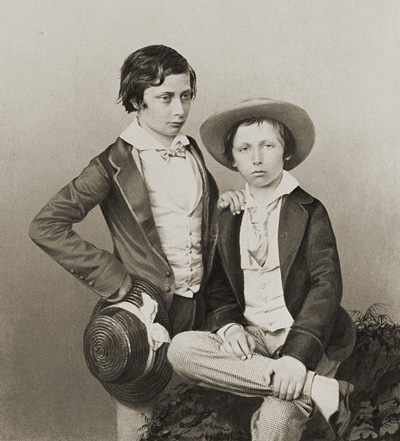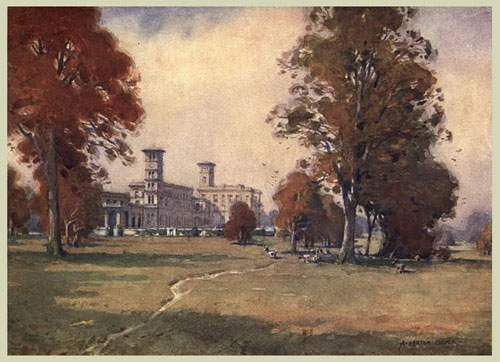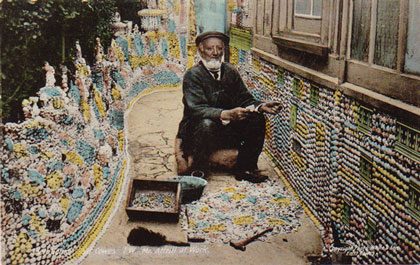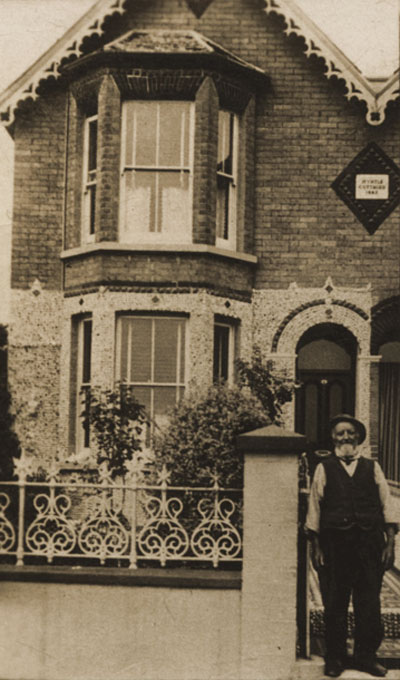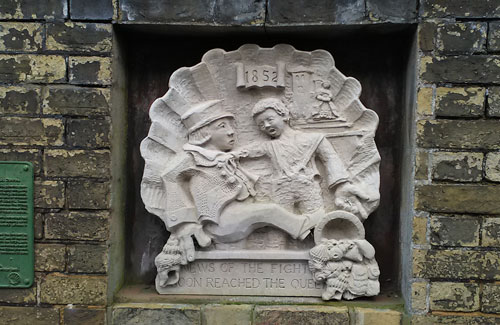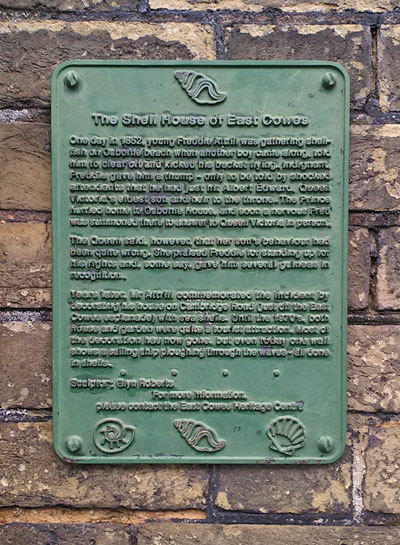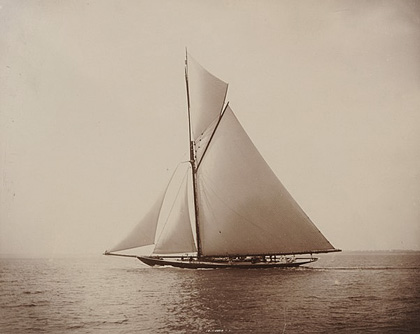But this was not to be Freddie’s lucky day. Along came another lad - an aggressive little fellow who not only told Freddie to ‘clear off!’ but also kicked his bucket of shells and sent it flying. Freddie, as you can imagine, was not amused, and punched the intruder.
Wham - take that! (detail from sculpture by Glyn Roberts)
Unfortunately, the intruder, as Freddie was promptly informed by some officious-looking gentlemen who rushed to the scene, was none other than Albert Edward, Prince of Wales: the Queen's eldest son and heir to the throne of Great Britain and Ireland.
Oh dear!
The Queen's little cherubs - Albert Edward, and brother 'Affie' photographed in 1855.

